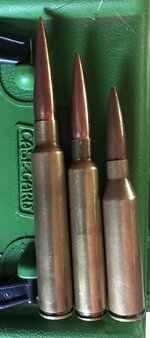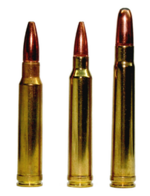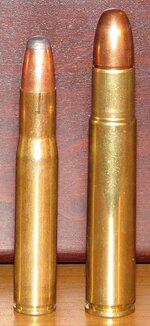- Messages
- 774
- Reactions
- 1,848
That's what I call an excellent question. I expect there were some technical reasons having to do with water capacity or case shape or... who knows. Since SAAMI average maximum pressures are no doubt far below explosive levels, it may not be too far off base to assume that a cartridge rated at 61,000 could be run at 65,000, for example, but would I do that? Nope. No chance. I wouldn't want to risk me or the rifle. I'll just stick with manual formulas.Choose your reputable rifle manufacture - the question remains why could one not run all cartridges at the same 65K pressure? The manufacturer of the rifle is not the question the quality of firearm is important. Is there that much difference in the case/ brass?
















